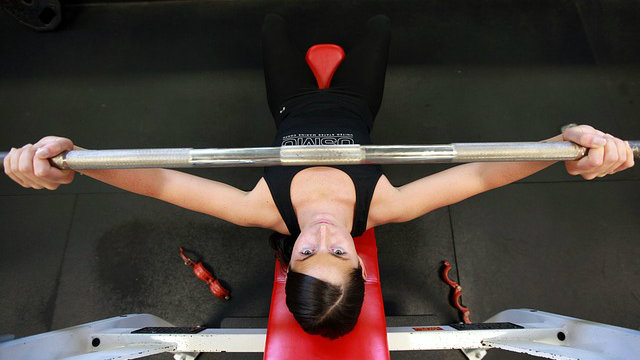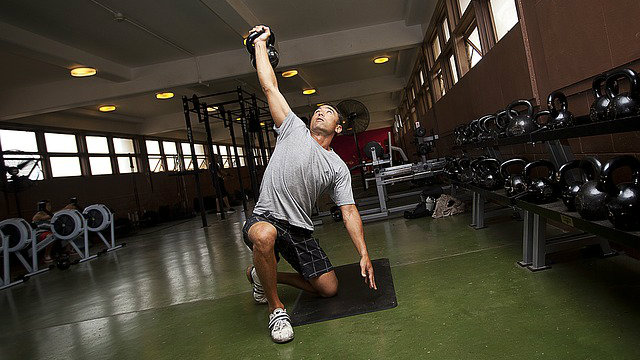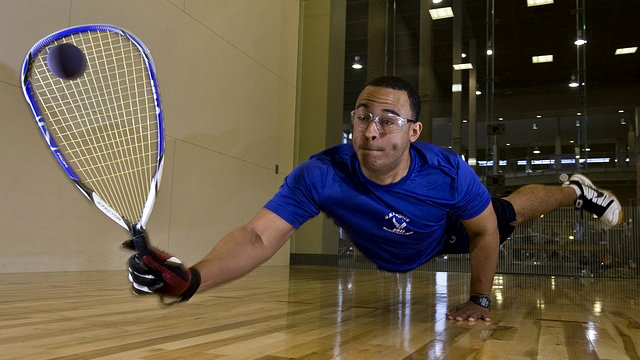 Reading Time: 7 minutes
Reading Time: 7 minutesA recent study concluded that inactivity can be attributed to 5.3 million premature deaths worldwide, which is a similar number to that of smoking. Death is one of the many downsides of not moving while the upsides are too many to count.
The fact that exercise is good for you is news to no one. The benefits of exercise are so widely touted it’s a wonder why more don’t do it with regularity. But despite the obvious upsides of exercise, recent CDC statistics state that only 20.3% of American adults meet the daily recommended levels of exercise. But while 80% of people fail to get adequate exercise, it’s not for lack of effort or intention.
It turns out that countless millions of people do start exercise programs each year. In fact, health clubs boasted over fifty million memberships in 2010 and over $20 billion in revenue. But while many start exercise programs, 50% of all new health club members quit within the first six months according to the International Health, Racquet & Sportsclub Association. In addition to those who don’t stick with it, even the regular exercisers seemingly don’t get enough of it. In fact, clubs reported that members typically visit only 54 times annually, or approximately once a week.
For whatever reason, exercise is one of those things we all know we should do, but we can’t seem to stick with. Life gets busy, we make excuses, and our exercise program gets put on the back burner. If this sounds like the challenge you’re facing, then here’s what you can do to stick with it and stop getting derailed.
1. Make a Plan and Know the Deeper “Why”
My first boss used to always say, “Know your plan, act your plan.” He was right. Lasting success with exercise starts and ends with a plan. The inherent problem with goal setting is people tend to focus only on what’s right in front of them (i.e. the short-term goal). “I want to lose ten pounds” can help you do just that, but once that goal is crossed off the list, then comes the inevitable question, “And then what?”
In my many years of coaching, I’ve seen countless individuals run races, lose weight, and even win contests only to come crashing back down to reality because they didn’t establish the “why” behind the “what.” Intrinsic motivation is that essential element lacking in goal setting. Intrinsic motivation is defined as the enjoyment of and interest in an activity for its own sake. This is where people get derailed – they focus on outcome without an equal focus on process. Both are vital to staying with your exercise commitment.
Instead of joining a gym merely because of extrinsic motivation (i.e. losing ten pounds), start instead with the question, “What type of activities do I enjoy or think I might like to try?” Spend a few weeks on process, fulfillment, and enjoyment. After you’ve established an intrinsically motivating process, couple that with outcome and you have a recipe for staying on track.
2. Cross Out That Extrinsic Goal of Losing Weight
The mother of all reasons people exercise is to lose weight. Unfortunately, those with such a motivation have unknowingly picked a bad option. Exercise correlates to increased appetite, an emotional reward construct (“I deserve that donut!”), and is generally an inefficient way to burn excess calories. Several recent studies show that exercise in and of itself is a poor choice for weight loss. Even the esteemed Mayo Clinic states that exercise participants “have demonstrated no or modest weight loss with exercise alone” and that “an exercise regime is unlikely to result in short-term weight loss.” Watch the video for a fascinating explanation.
The problem with the exercise-for-weight-loss formula is that many people start an exercise program with a goal that tends to be elusive and not seeing results is a quick recipe for getting derailed. Losing weight is a noble pursuit, but an honest assessment of the true culprits of weight gain is required to tackle the problem. Weight loss has more to do with your psychological and physiological relationship with food.
Here’s a tip: lose the weight first through better nutrition, then hit the gym. Your healthier and leaner body will feel better exercising than a heavy and nutritionally disadvantaged one.
3. Don’t Do Too Much Too Soon
If you’ve ever taken a few weeks off from exercise, you know how tough that first workout back feels. Coming back from an exercise hiatus can sometimes feel like you’ve been hit by a bus. I can’t imagine the prospect of starting for the first time ever or starting exercise after several years of not working out.
It takes courage to start anew, but more importantly, it takes smarts. It’s not enjoyable to trash your body by exercising vigorously before you’re ready. Start with a light cardiovascular regimen (think: walking a mile or cycling five miles) and basic resistance exercises (think: circuit training or bodyweight exercises). Once you have laid the foundation for exercise, you’ll be ready to tackle the more rigorous and technical modalities from Olympic lifting to HIIT training. Until then, there’s nothing wrong with taking it a little slower.
4. Periodize Your Training
Periodization is the systematic planning of athletic or physical training. This is how athletes train to achieve peak performance for their most important competitions of the year. The basic idea is that you can’t go hard year round, but you can organize your training to progress toward a certain goal and in a certain timeframe, i.e. pre-season, in-season, and post-season training.
Even for those of us who are not professional athletes, periodization can still be helpful is we see it as “training with the seasons.” We all experience seasons in life, both on a macro and micro level. One of the key derailers with exercise is that people get burned out both literally and figuratively — you get bored and/or your body gets worn out. Periodization will help you properly plan for each “season” versus just going to the gym to see how many calories you can burn.
So maybe in summer time you sign up for a 5K and train for that. Maybe in the fall you start training in a way that will ensure you have the best ski trip come winter. See if you can set goals that involve fun activities related to the seasons and that will make your training fun and interesting, too.
5. Deal With Injuries Intelligently
Perhaps the granddaddy of all exercise-plan derailments is injury. The more you exercise, the more likely it is you’ll face injury, so taking preventative measures is paramount. It goes back to step one: the plan – do you have the proper footwear, attire, and equipment for your chosen activity? Have you properly prepared for exercise? Have you warmed up? Do you have the right training balance, i.e. strength, cardio, mobility, and recovery are all in your schedule?
Even with a careful consideration of such questions, accidents and injuries happen. The key is to deal with it right then and there. Depending on the severity of your injury, you might be able to work around it. Instead of doing nothing, consider active rest when it comes to the injured area. If you’ve injured your shoulder, ride a bike. If you’ve inured your knee, work on low-impact exercise like pool workouts or yoga. By keeping up with some form of exercise, you will stimulate endorphins, adrenaline, testosterone, and pheromones, all of which promote healing. Injuries are part of life, but need not derail you entirely.
What If You Simply Hate Exercise?
Name one thing you do with your free time that you simply hate doing. There’s a word for doing something we have to do that we don’t like — it’s called work. With that in mind, it’s interesting to note that many people refer to exercise, as “working out.” Statistics show that most people don’t like traditional exercise and yet many continue to beat their heads against the wall in a grand pursuit of health and wellness. Surely there must be another way.
Fortunately for you, the exercise hater, there is. Instead of hitting the gym and “working out,” you can get off your butt in countless other ways to move and “play” hard. Commute with your legs or your bike, take up kayaking or paddle boarding, or join a dragon boat team. Start a sailing team. Join a kickball league. Audition for the community theater spring musical. Go dancing every Friday night. Take up kung fu or another martial art. Try your hand at tennis.
I could go on, but I won’t. Here’s the bottom line: unless you want to be a statistic, you must exercise. If you hate it, fair enough — but find a different word for it and move nonetheless. It just may save your life.
Start Your New Exercise Habit Today
You can either visit your goal, or live at your goal. Too many of us only take occasional visits or just circle over our destination. By having an evolving plan, intrinsic motivation, and taking proper care of your mind and body, you can avoid the pitfalls that derail many and start living a healthier and happier life right now. So start with the first tip: know your plan, and then you can act your plan.












